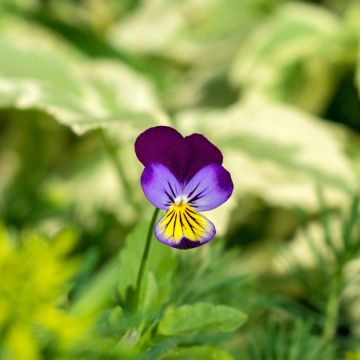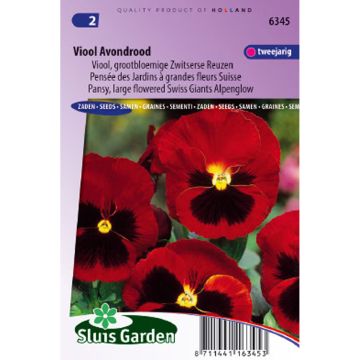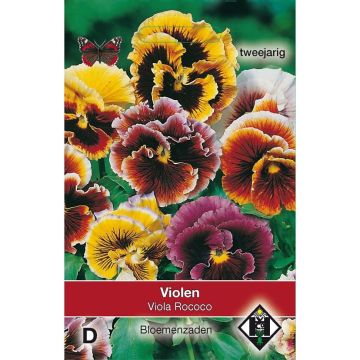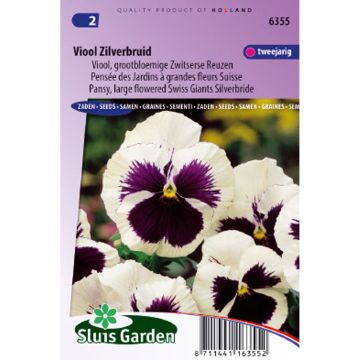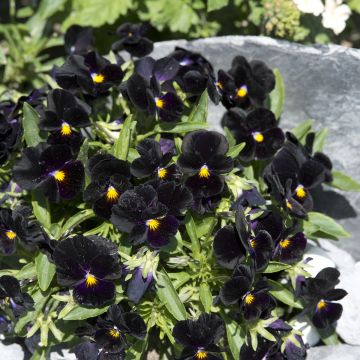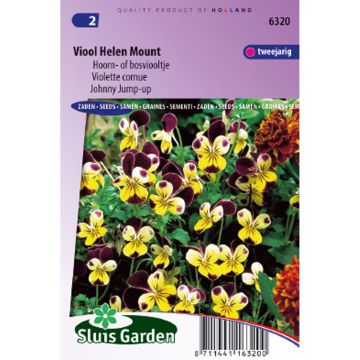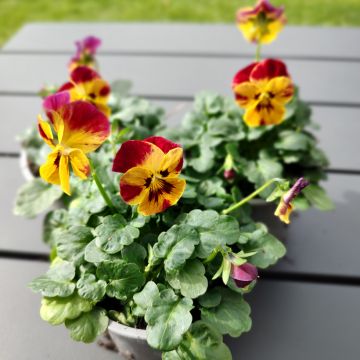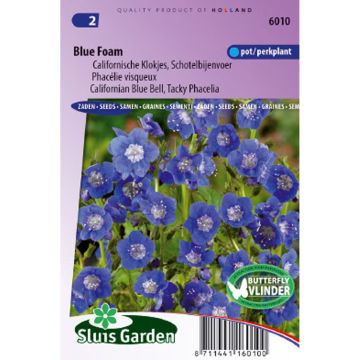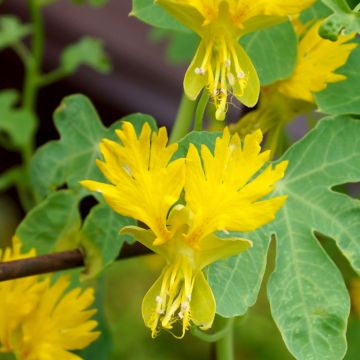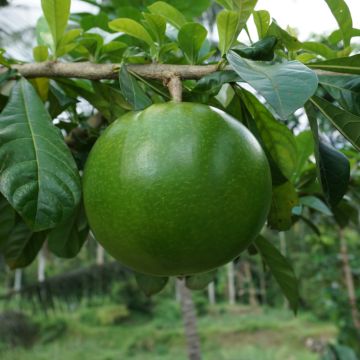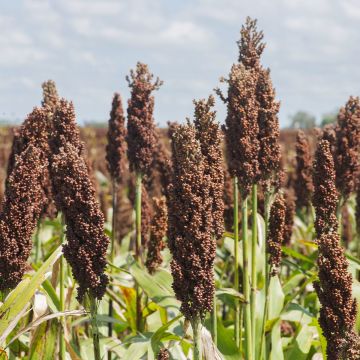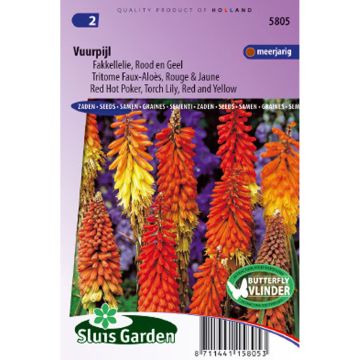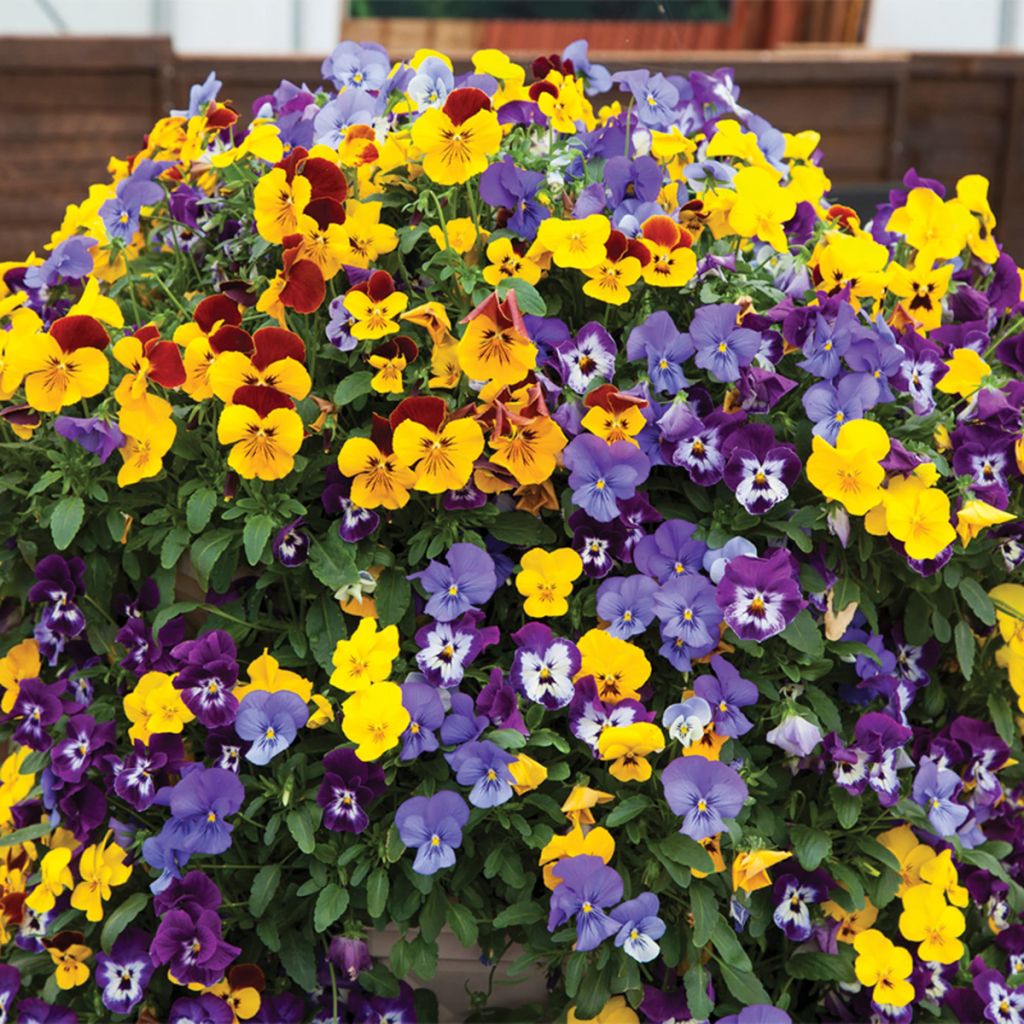

Viola x wittrockiana Freefall XL Mix Seeds - Pansy
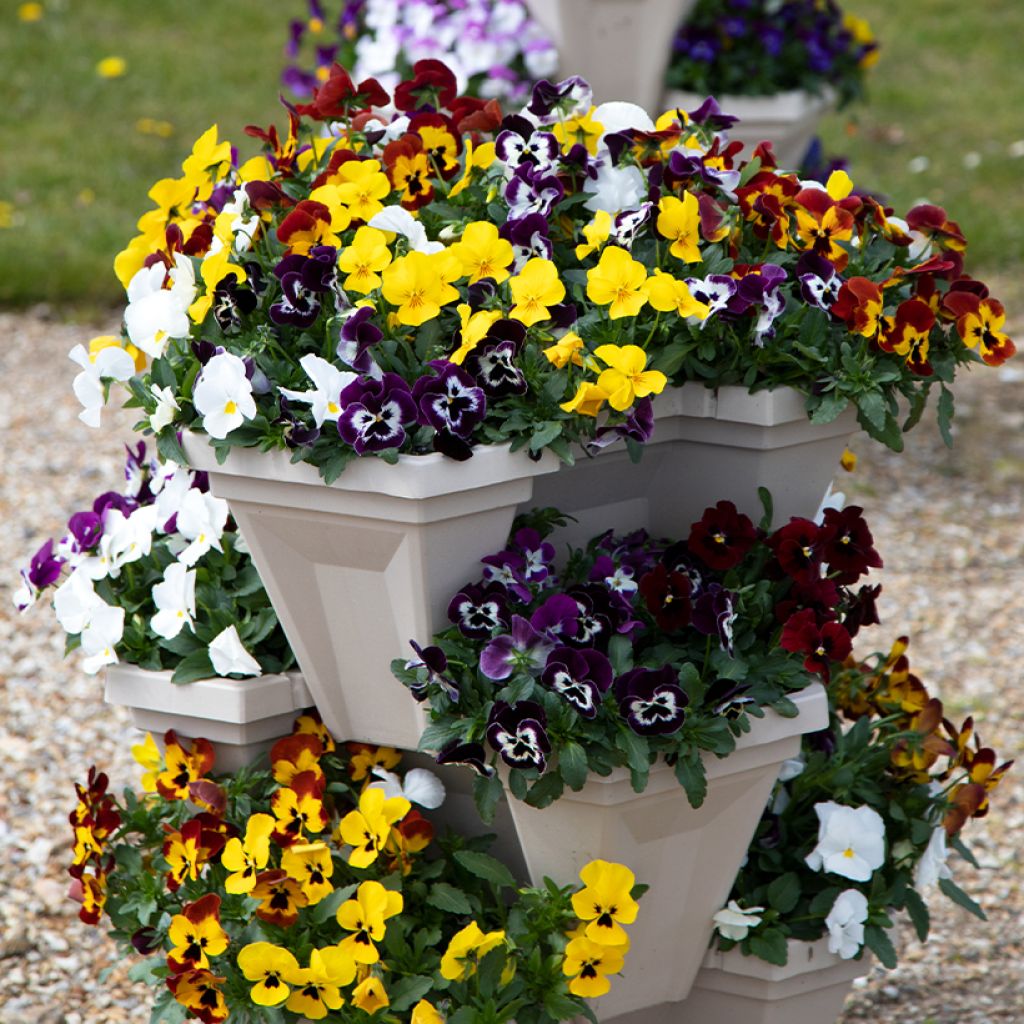

Viola x wittrockiana Freefall XL Mix Seeds - Pansy
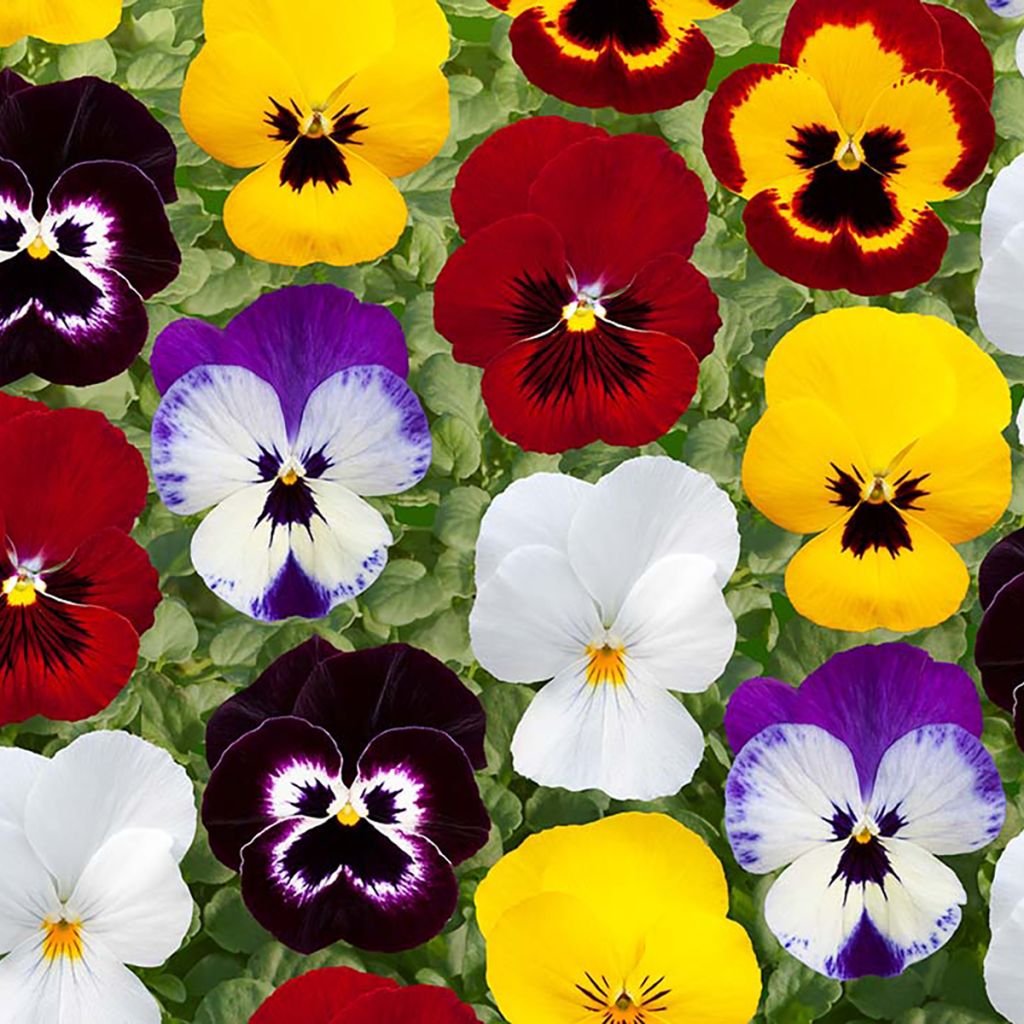

Viola x wittrockiana Freefall XL Mix Seeds - Pansy
Viola x wittrockiana Freefall XL Mix Seeds - Pansy
Viola x wittrockiana Freefall XL Mix
Pansy, Garden Pansy
This item cannot be shipped to the selected country
Dispatch by letter from €3.90
More information
Schedule delivery date,
and select date in basket
This plant carries a 6 months recovery warranty
More information
We guarantee the quality of our plants for a full growing cycle, and will replace at our expense any plant that fails to recover under normal climatic and planting conditions.
Seed-only orders are dispatched by sealed envelope. The delivery charge for seed-only orders is €3.90.
Does this plant fit my garden?
Set up your Plantfit profile →
Description
The 'Freefall XL Mix' Trailing Pansy is a hybrid variety of Viola x wittrockiana. It features very large flowers on a trailing plant. With a mix of colors, the flowering displays shades of mauve, purple, white, bright yellow, dark yellow, and reddish-brown. Its compact habit, non-tangling stems, and early flowering make it stand out, blooming 15 days earlier than usual. It flowers from March to August and is particularly resistant to cold and heat. It is perfect for garden beds and containers.
Belonging to the Violaceae family, the Pansy, Viola x wittrockiana, is sometimes referred to as the Giant Swiss Pansy. It is a perennial herbaceous plant, usually grown as an annual or even a biennial. Pansies do not exist in the wild; they are the result of hybridisation between several species of violets. There are numerous varieties, all of which bear adorable flowers with five spotted or unspotted petals in various colours. The leaves are medium green, elliptical, with deeply scalloped edges and a compact and branching habit.
Pansies are not demanding plants; they thrive in full sun or partial shade, in moderately rich and well-drained soil. Sow them from February to April for summer flowering or from June to August for spring flowering. They are ideal for containers or hanging baskets, although they can also be used to edge borders in the garden. Pair them with small plants with colourful foliage to enhance and modernise their appearance, such as the famous Black Ophiopogon or Carex. Alternatively, a mix with Wallflowers creates a beautiful effect.
Pansy petals are edible, and their colours will add a touch of originality to your salads and pastries. To use in this way, grow them as you would your vegetables, in the most natural way possible.
Report an error about the product description
Viola x wittrockiana Freefall XL Mix Seeds - Pansy in pictures


Flowering
Foliage
Plant habit
Botanical data
Viola
x wittrockiana
Freefall XL Mix
Violaceae
Pansy, Garden Pansy
Cultivar or hybrid
Other Pansy seeds
Planting and care
Calendar: Sow Pansies from February to April for summer flowering or from June to August for flowering in the following spring.
In a tray filled with good seed compost, bury the seeds to a depth of 1.5 mm and cover with a sheet of newspaper, for example, as darkness is beneficial for germination. Maintain at a temperature ranging from 15 to 18°C while keeping the soil moist. Germination takes between 14 and 21 days. Be careful of high temperatures that may prevent seed germination.
When the seedlings are developed enough to be handled, transplant them into pots and let your plants grow by gradually acclimatising them to outdoor conditions for about fifteen days. Plant your Pansies in the garden, 25/30 cm apart, in full sun or partial shade.
For late winter/early spring sowings, wait until all risk of frost has passed.
Sowing period
Intended location
This item has not been reviewed yet - be the first to leave a review about it.
Flower seeds
Haven't found what you were looking for?
Hardiness is the lowest winter temperature a plant can endure without suffering serious damage or even dying. However, hardiness is affected by location (a sheltered area, such as a patio), protection (winter cover) and soil type (hardiness is improved by well-drained soil).

Photo Sharing Terms & Conditions
In order to encourage gardeners to interact and share their experiences, Promesse de fleurs offers various media enabling content to be uploaded onto its Site - in particular via the ‘Photo sharing’ module.
The User agrees to refrain from:
- Posting any content that is illegal, prejudicial, insulting, racist, inciteful to hatred, revisionist, contrary to public decency, that infringes on privacy or on the privacy rights of third parties, in particular the publicity rights of persons and goods, intellectual property rights, or the right to privacy.
- Submitting content on behalf of a third party;
- Impersonate the identity of a third party and/or publish any personal information about a third party;
In general, the User undertakes to refrain from any unethical behaviour.
All Content (in particular text, comments, files, images, photos, videos, creative works, etc.), which may be subject to property or intellectual property rights, image or other private rights, shall remain the property of the User, subject to the limited rights granted by the terms of the licence granted by Promesse de fleurs as stated below. Users are at liberty to publish or not to publish such Content on the Site, notably via the ‘Photo Sharing’ facility, and accept that this Content shall be made public and freely accessible, notably on the Internet.
Users further acknowledge, undertake to have ,and guarantee that they hold all necessary rights and permissions to publish such material on the Site, in particular with regard to the legislation in force pertaining to any privacy, property, intellectual property, image, or contractual rights, or rights of any other nature. By publishing such Content on the Site, Users acknowledge accepting full liability as publishers of the Content within the meaning of the law, and grant Promesse de fleurs, free of charge, an inclusive, worldwide licence for the said Content for the entire duration of its publication, including all reproduction, representation, up/downloading, displaying, performing, transmission, and storage rights.
Users also grant permission for their name to be linked to the Content and accept that this link may not always be made available.
By engaging in posting material, Users consent to their Content becoming automatically accessible on the Internet, in particular on other sites and/or blogs and/or web pages of the Promesse de fleurs site, including in particular social pages and the Promesse de fleurs catalogue.
Users may secure the removal of entrusted content free of charge by issuing a simple request via our contact form.
The flowering period indicated on our website applies to countries and regions located in USDA zone 8 (France, the United Kingdom, Ireland, the Netherlands, etc.)
It will vary according to where you live:
- In zones 9 to 10 (Italy, Spain, Greece, etc.), flowering will occur about 2 to 4 weeks earlier.
- In zones 6 to 7 (Germany, Poland, Slovenia, and lower mountainous regions), flowering will be delayed by 2 to 3 weeks.
- In zone 5 (Central Europe, Scandinavia), blooming will be delayed by 3 to 5 weeks.
In temperate climates, pruning of spring-flowering shrubs (forsythia, spireas, etc.) should be done just after flowering.
Pruning of summer-flowering shrubs (Indian Lilac, Perovskia, etc.) can be done in winter or spring.
In cold regions as well as with frost-sensitive plants, avoid pruning too early when severe frosts may still occur.
The planting period indicated on our website applies to countries and regions located in USDA zone 8 (France, United Kingdom, Ireland, Netherlands).
It will vary according to where you live:
- In Mediterranean zones (Marseille, Madrid, Milan, etc.), autumn and winter are the best planting periods.
- In continental zones (Strasbourg, Munich, Vienna, etc.), delay planting by 2 to 3 weeks in spring and bring it forward by 2 to 4 weeks in autumn.
- In mountainous regions (the Alps, Pyrenees, Carpathians, etc.), it is best to plant in late spring (May-June) or late summer (August-September).
The harvesting period indicated on our website applies to countries and regions in USDA zone 8 (France, England, Ireland, the Netherlands).
In colder areas (Scandinavia, Poland, Austria...) fruit and vegetable harvests are likely to be delayed by 3-4 weeks.
In warmer areas (Italy, Spain, Greece, etc.), harvesting will probably take place earlier, depending on weather conditions.
The sowing periods indicated on our website apply to countries and regions within USDA Zone 8 (France, UK, Ireland, Netherlands).
In colder areas (Scandinavia, Poland, Austria...), delay any outdoor sowing by 3-4 weeks, or sow under glass.
In warmer climes (Italy, Spain, Greece, etc.), bring outdoor sowing forward by a few weeks.

































